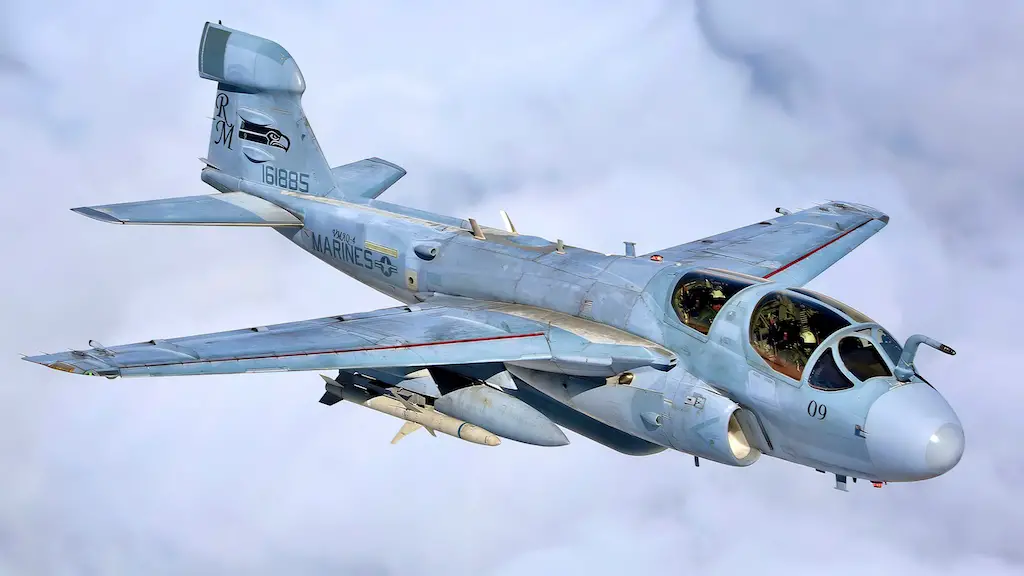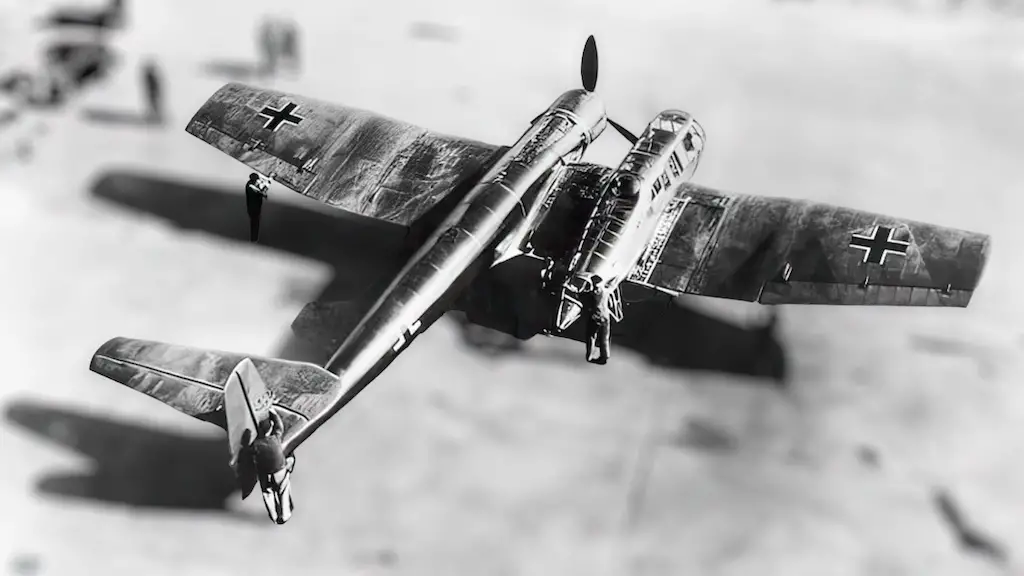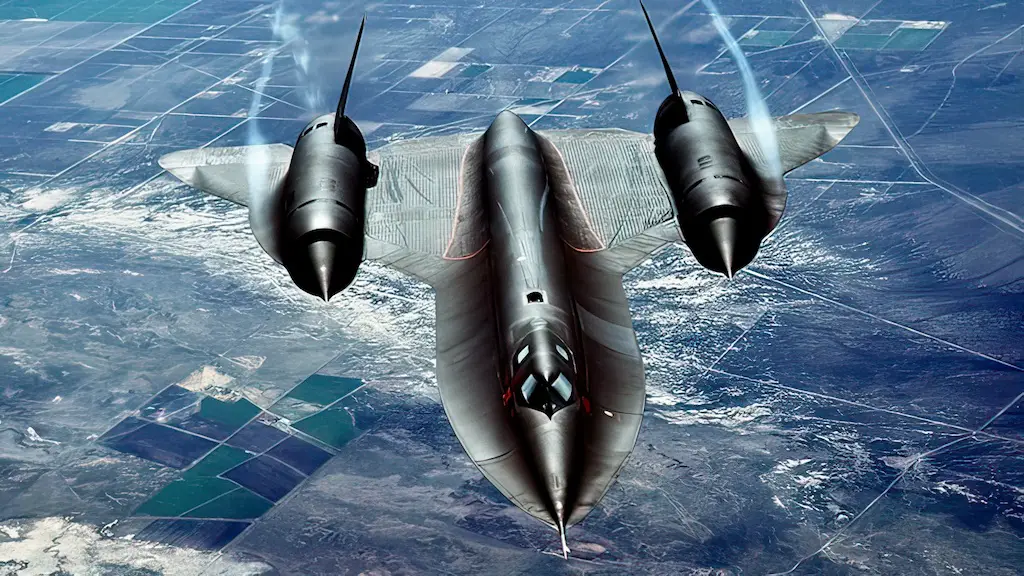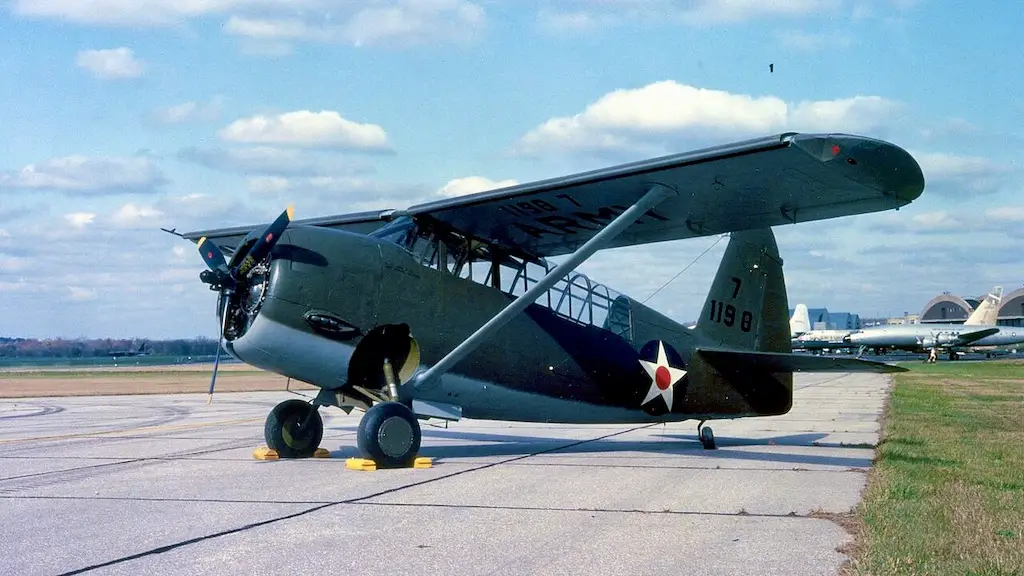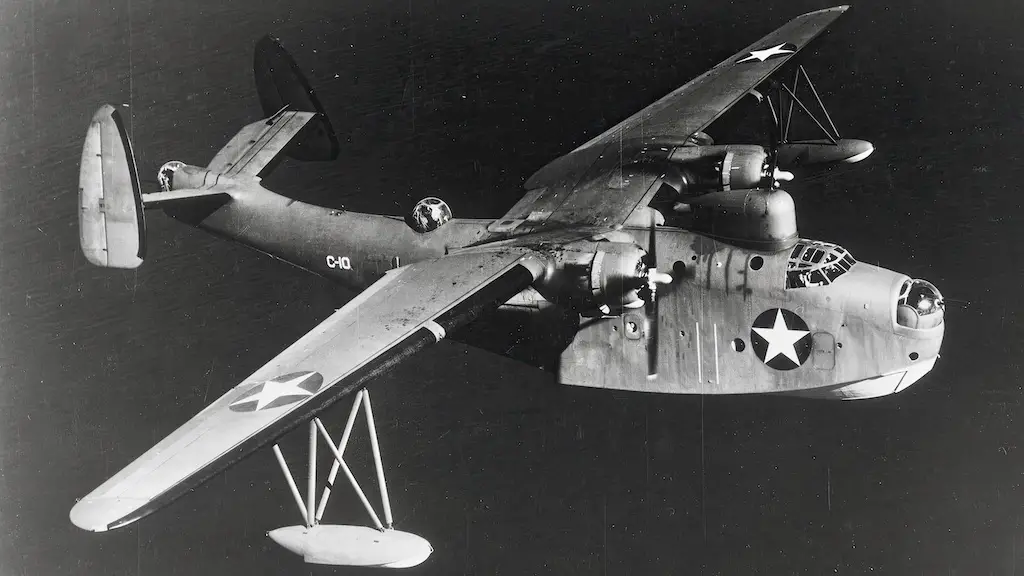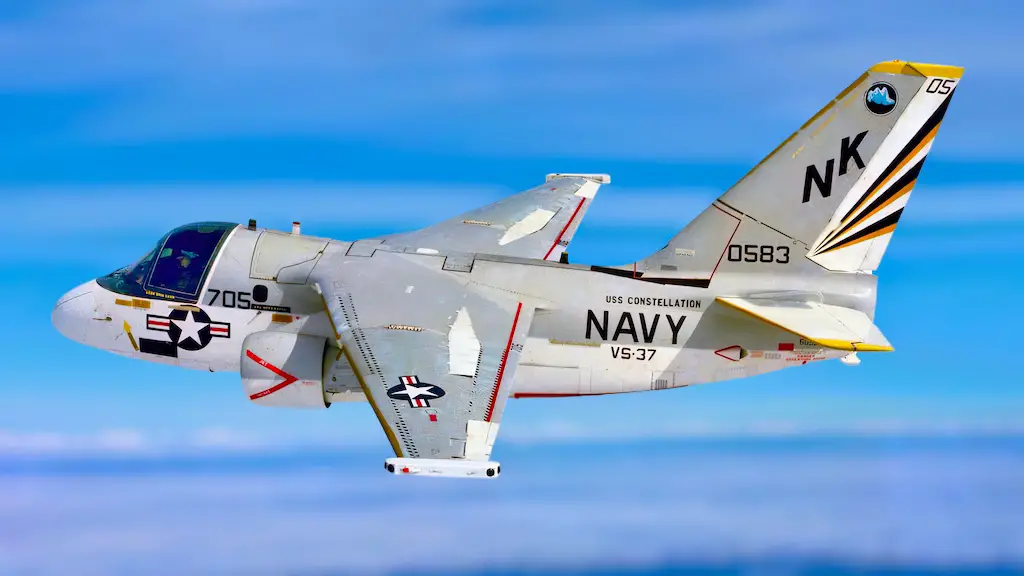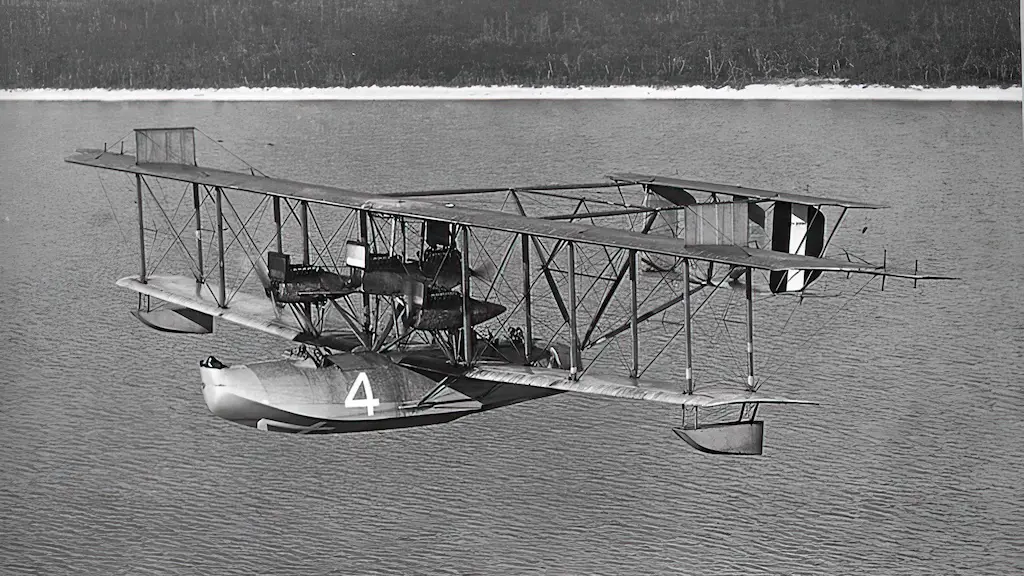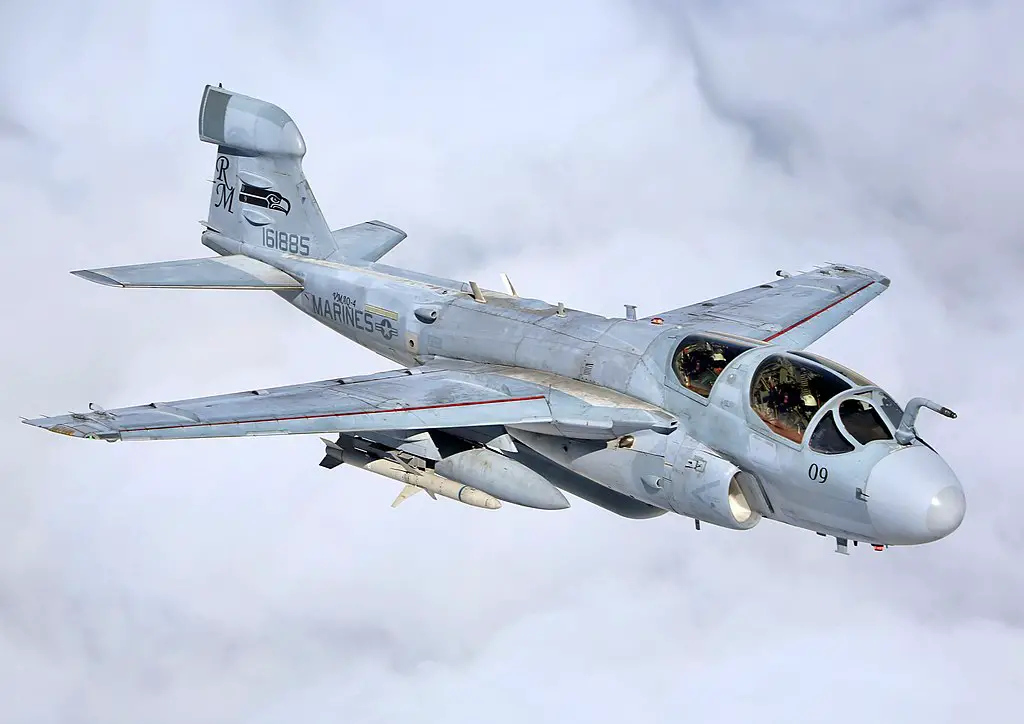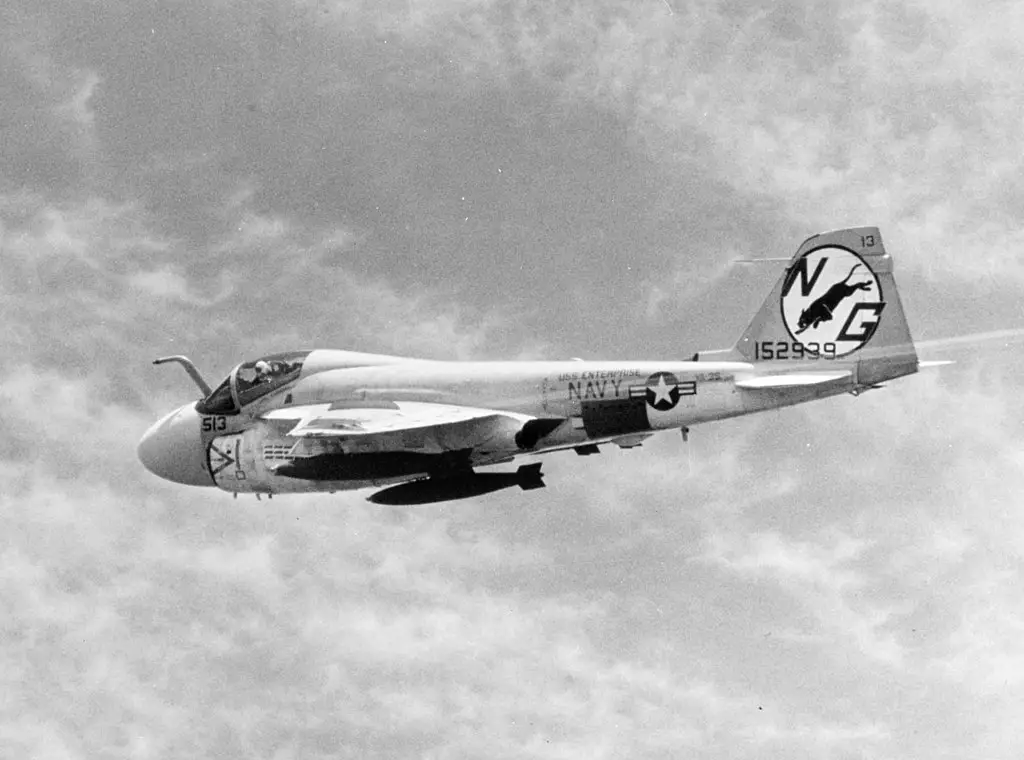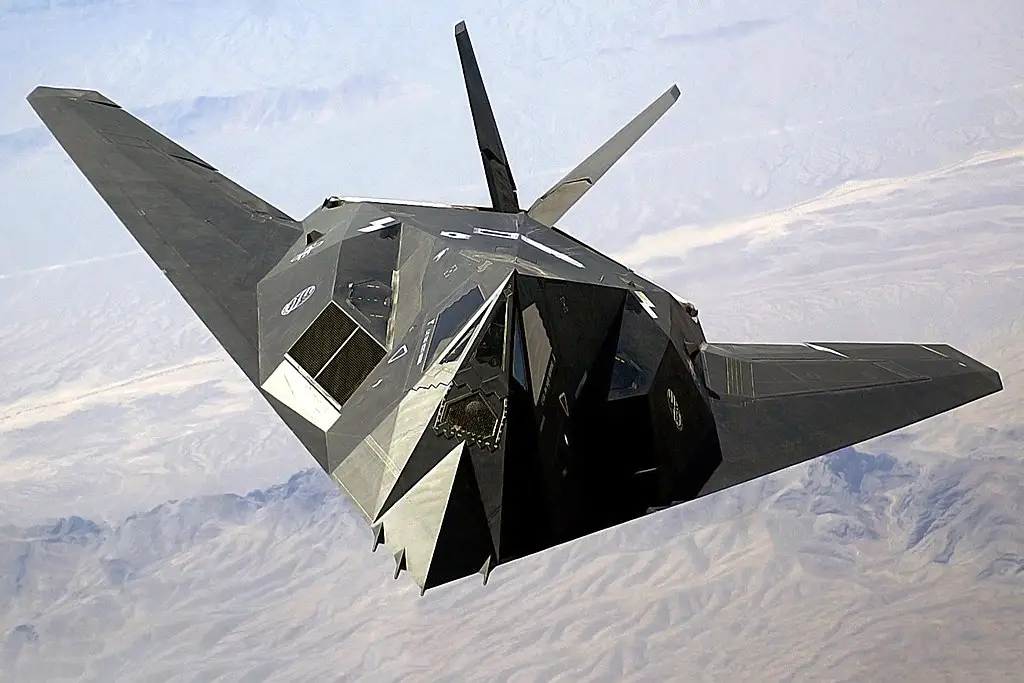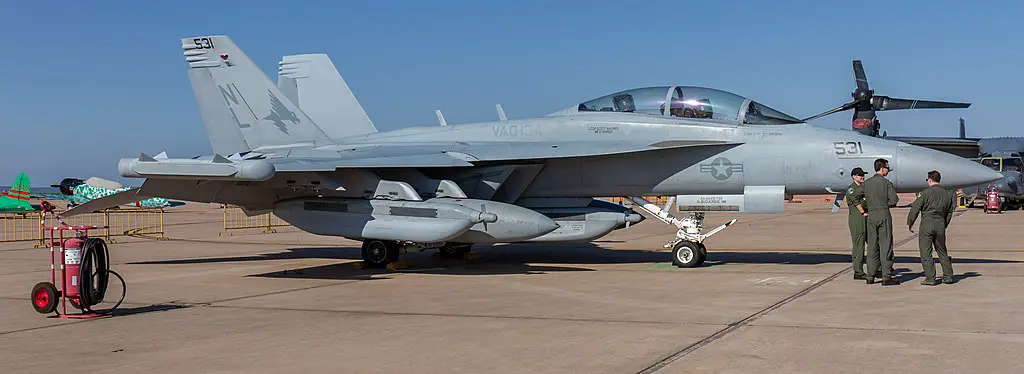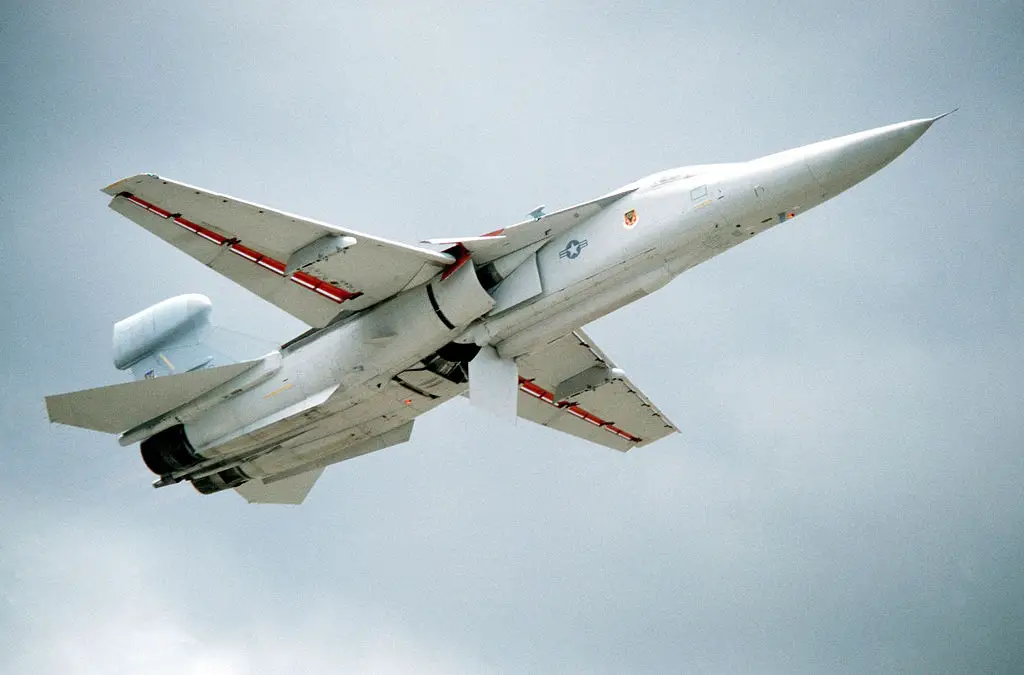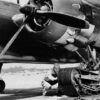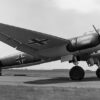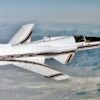Developed back in the 1960s, the EA-6B Prowler proved to be such a reliable electronic warfare platform that its service life stretched well into the 21st century. Flying with the US Navy, US Marine Corps, and the US Air Force, it ensured America’s superiority in the electronic domain in a multitude of armed conflicts. While the Prowler’s main task was to jam enemy radars cleaning the way to friendly warplanes, it also had teeth of its own. Combining its electronic capabilities with an array of underwing weapons, the Prowler was just as successful in the attack role, presenting a serious threat to hostile air defense installations.
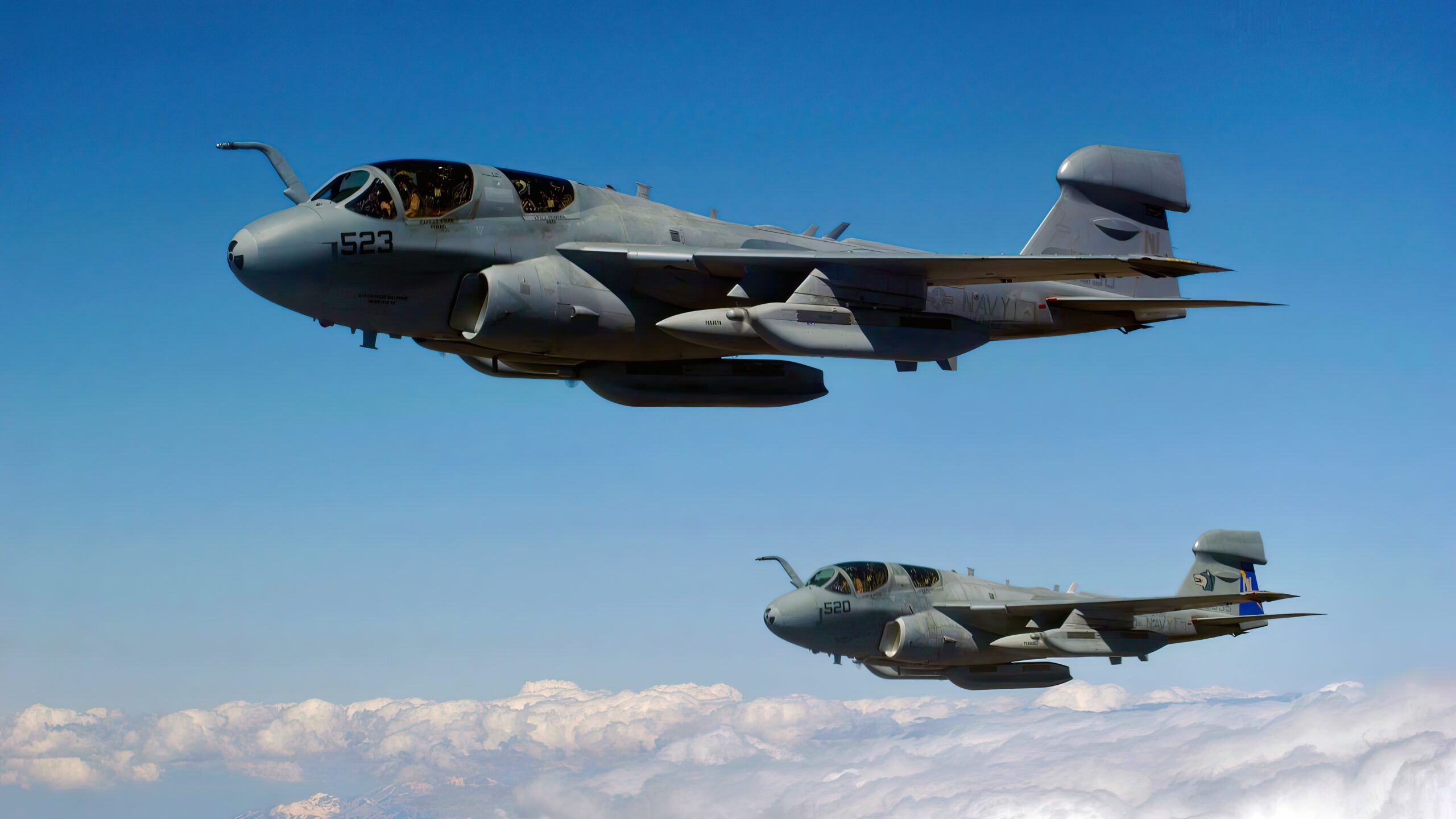
Intruder on the prowl
The Prowler’s direct predecessor was the EA-6A based on the A-6 Intruder attack aircraft. Grumman made about thirty EA-6As, some of those being existing Intruder airframe conversions and some newly manufactured aircraft. Following a brief evaluation, a decision to develop a dedicated aircraft was made. The resulting airplane, designated EA-6B Prowler was the first purpose-designed tactical electronic warfare aircraft. The first Prowler flew in May 1968. The Navy started receiving EA-6Bs in January 1971 and deployed them to Vietnam the following year.
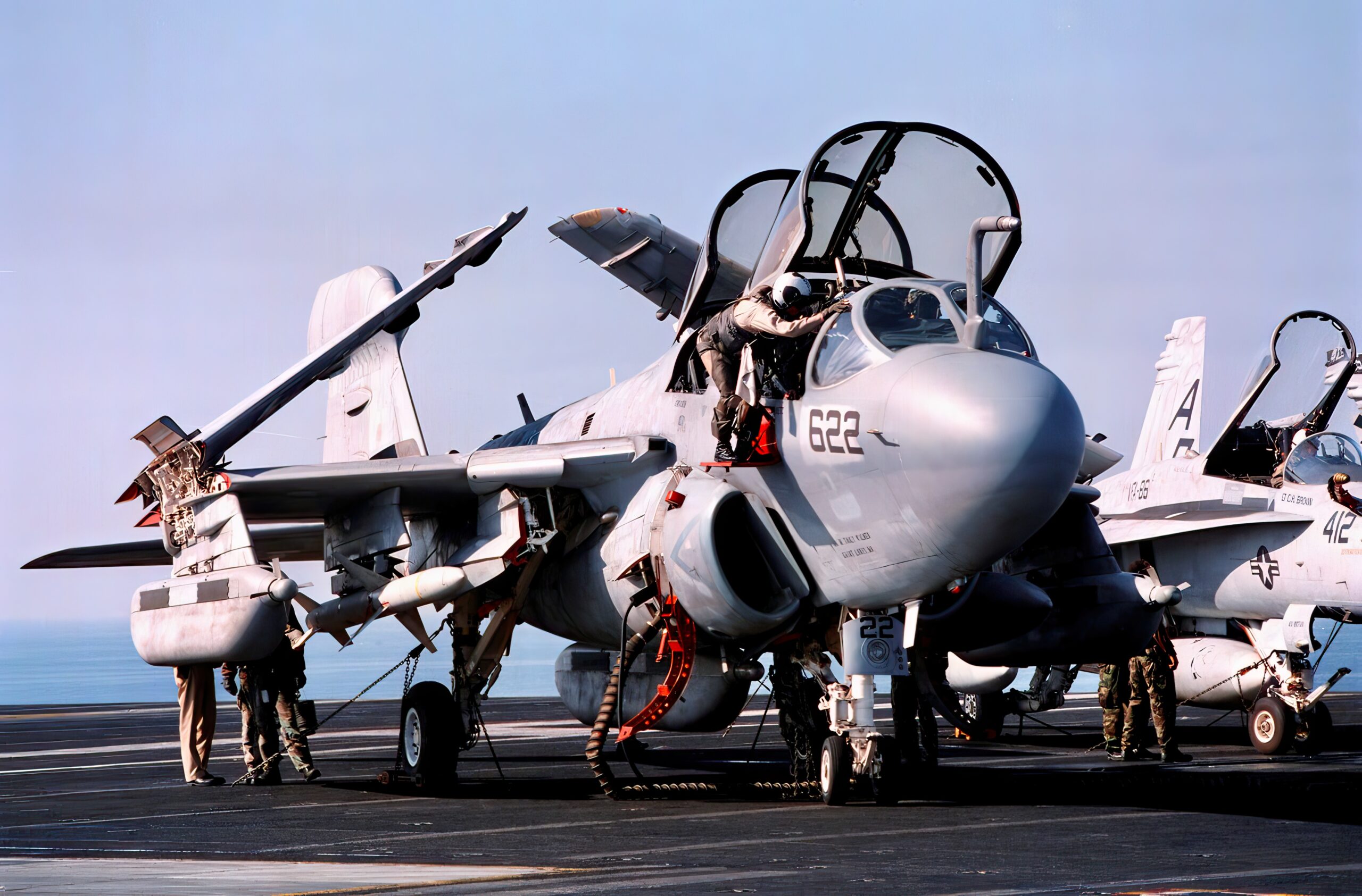
Bigger than the intruder
The Prowler was about four feet longer than the Intruder and significantly heavier. Unlike the Intruder, it was not supposed to drop its load on the mission and return back to carrier as a much lighter plane. The Prowler would return weighing basically the same, except for the fuel, of course. So, it received slightly more powerful engines, reinforced frame and sturdier landing gear.
Despite being a relatively small aircraft, the Prowler was manned by a crew of four: a pilot and three electronic countermeasures officers. The Prowler sent out jamming transmissions from massive underwing Tactical Jamming System (TJS) pods. Its crew also analyzed adversary radar emissions, which were received by equipment installed in a bulge on the tail. Carrier-based Prowlers also provided protection against incoming anti-ship missiles.
Keeping up-to date
For an aircraft fulfilling such a role as the Prowler’s one, the onboard electronic equipment is of much greater importance than the qualities of the airframe or power plants. That’s why the Prowler based on an airframe developed to a 1957 requirement managed to remain in service for decades, outliving the Intruder, which also was something of a superager, by some twenty years. That was possible owing to several major electronics upgrades. One of the most thorough of those was the development of the Advanced Capability EA-6B Prowler (ADVCAP) variant in the 1990s. Another big step ahead was the Improved Capability (ICAP) III upgrade introduced in the early 2000s.
Another crucial upgrade of the EA-6B was the introduction of AGM-88A HARM and AGM-45 Shrike anti-radiation missiles carrying capability in the early 1980s, which allowed the Prowler to destroy enemy radars on its own. Carrying up to four such missiles at a time, it became an even more potent tool for breaching and destroying enemy air defenses.
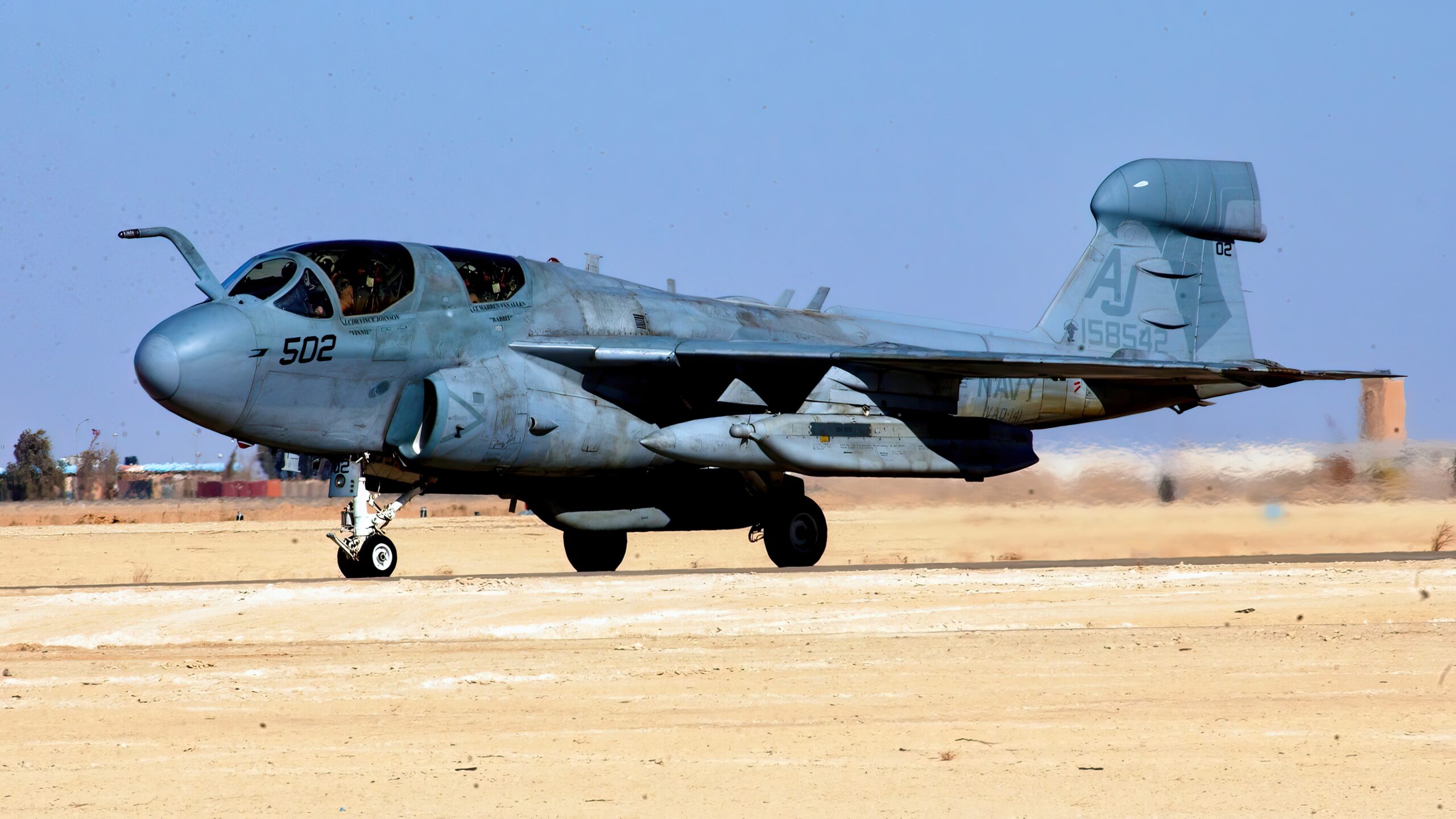
Prowler in combat: from Vietnam to Syria
The Prowler first saw action in the last three years of the War in Vietnam. From then on, it took part in pretty much all military operations conducted by the United States around the globe. In 1980s, these included the 1983 invasion of Grenada, the operations El Dorado Canyon in 1986 and Praying Mantis in 1988.
During the Operation Desert Storm, a force of about 40 USN and USMC Prowlers was instrumental in destroying Saddam Hussein’s air defenses using their jamming equipment and HARM missiles. The EA-6B also took part in the Operation Iraqi Freedom in 2003.
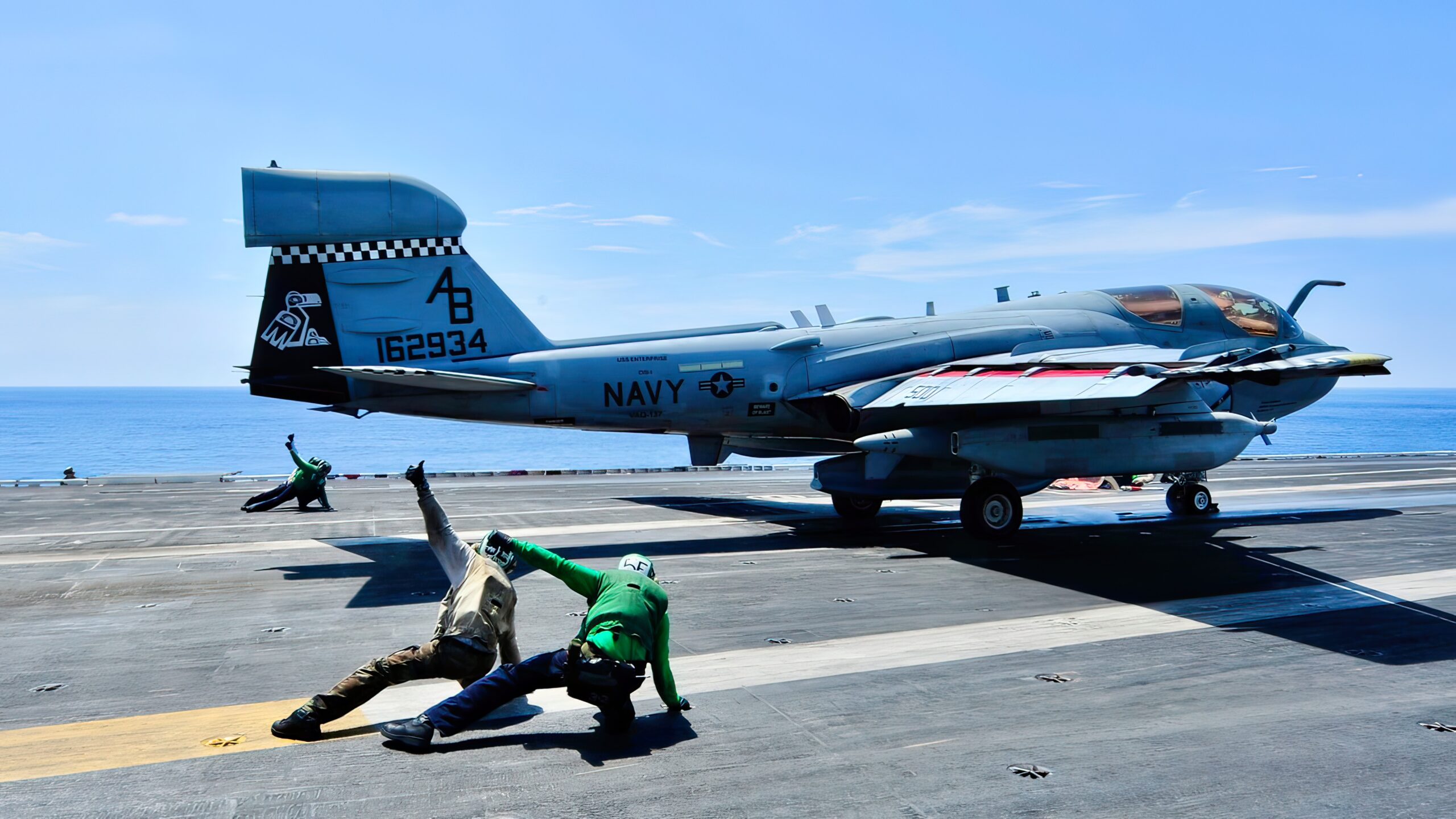
Sailors assigned to the aircraft carrier USS Enterprise (CVN 65) give flight deck personnel and pilots the all-clear signal to launch an EA-6B Prowler assigned to the Rooks of Electronic Attack Squadron (VAQ) 137
Not invisible to radar
The Prowler remained the most intensely used aircraft throughout the Operation Allied Force in 1999. Without it overcoming Yugoslavian air defenses could have been much more costly. Even F-117 Nighthawk stealth bombers preferred flying with Prowlers because even they were not 100% invisible to radars. In fact, the only F-117 lost over Serbia was downed when it was flying without Prowlers’ support, as they were grounded due to bad weather.
Later the Pentagon made use of Prowlers in Afghanistan, even though the Taliban didn’t have much of air defense installations to jam or destroy. Still, the aircraft proved to be as useful in counter-insurgency and anti-terrorism operations. There Prowlers would jam cell phones and prevent remote detonation of improvised explosive devices. They also performed similar tasks in post-war Iraq. In the last years of its military career, the Prowler was also employed in the campaign against ISIS in Iraq and Syria.
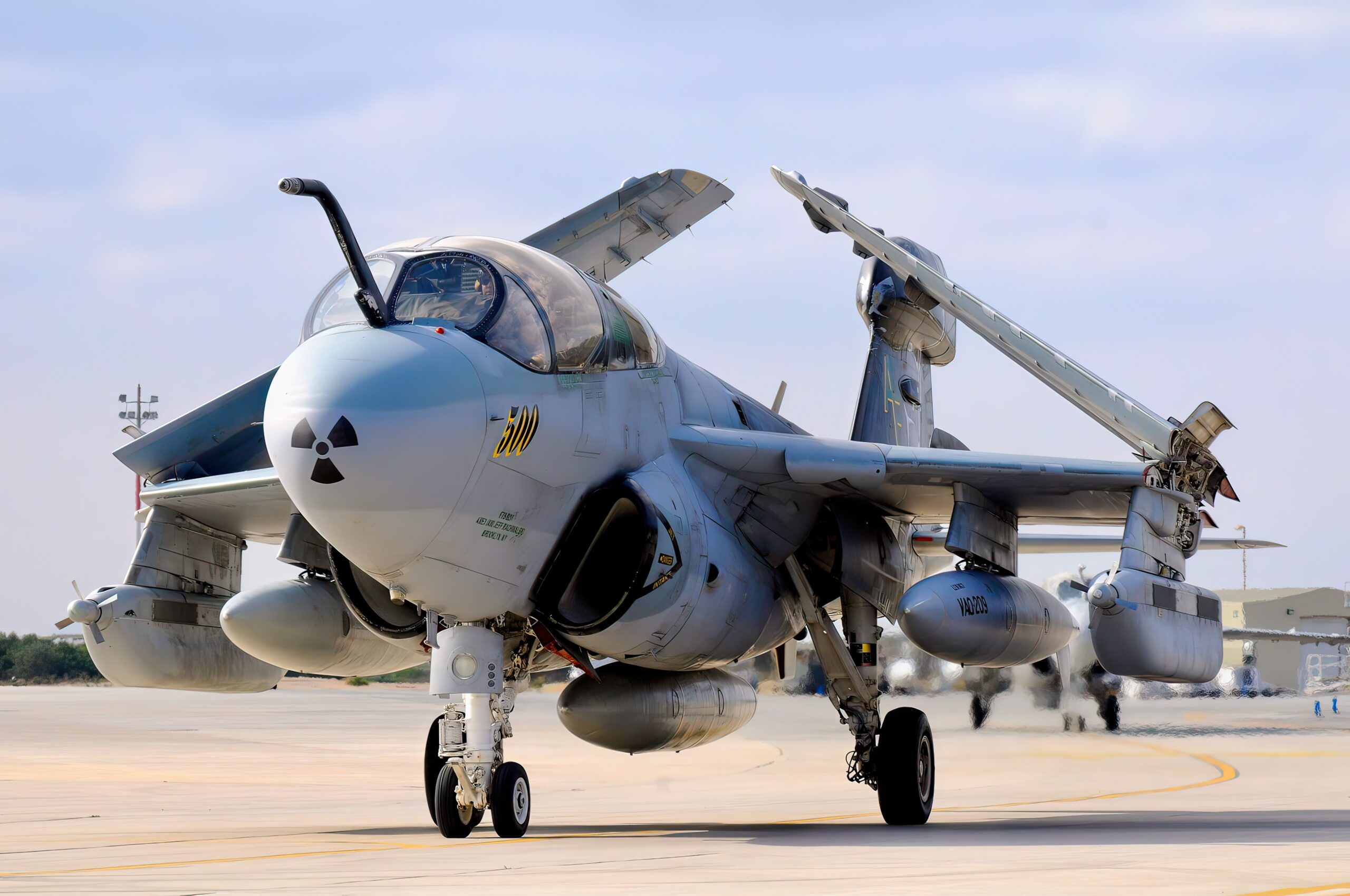
Retirement and handing over the duties
In the early 1980s, almost two decades after the Prowler’s first flight, General Dynamics–Grumman EF-111A Raven was introduced into service. It was a much faster aircraft with supersonic capability and generally more advanced than the Prowler. However, it also had some downsides which the EA-6B didn’t have. Crucially, the Prowler was capable of operating from aircraft carriers, while the Raven wasn’t. So, the Prowler outlived the Raven in service by many years.
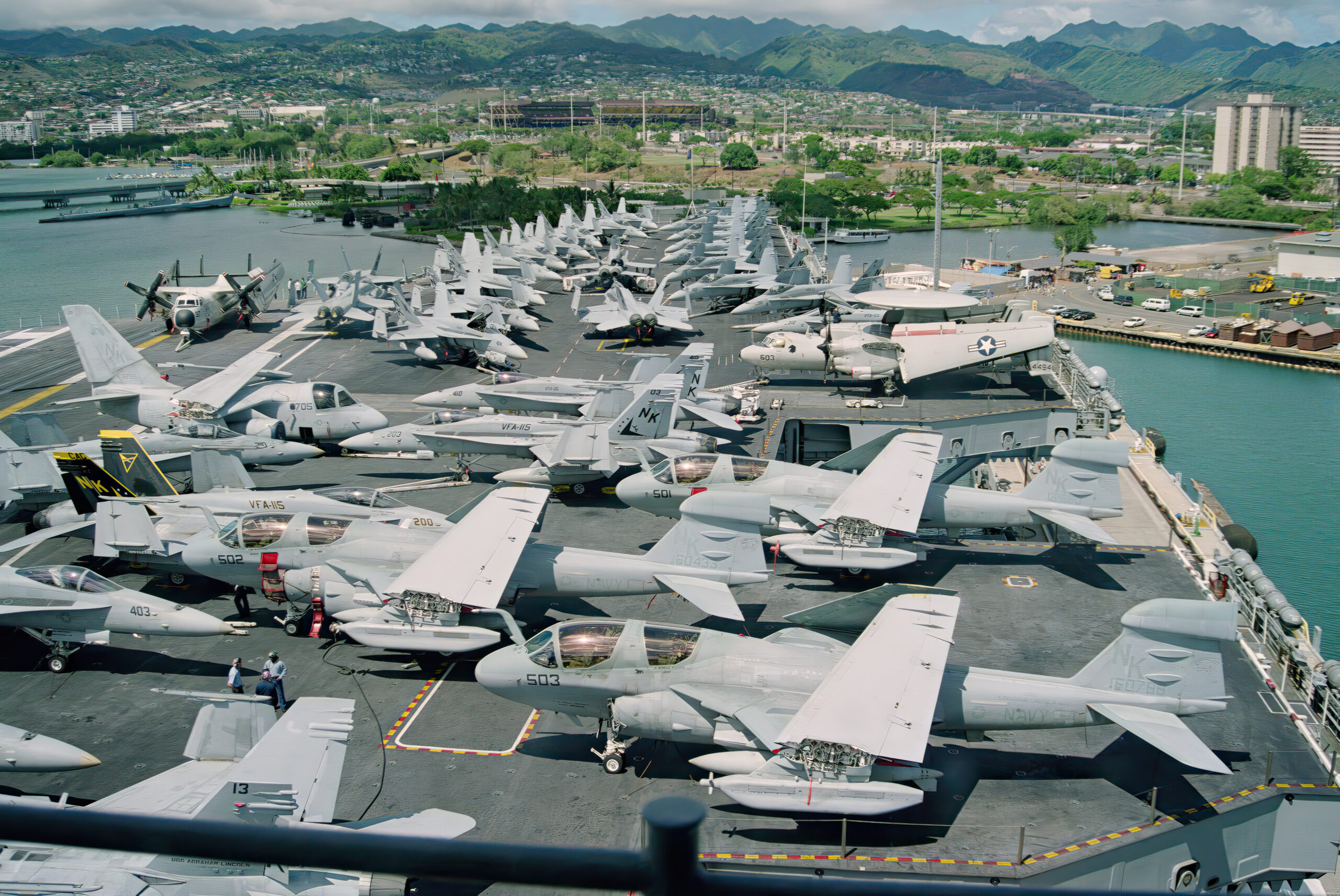
When Boeing EA-18G Growler, a derivative of the F/A-18F Super Hornet was introduced in 2009, the Prowler was scheduled for retirement by 2012. And yet, its service life was extended again and again until the Growler completely replaced the Prowler. “The Chariot of Electronic Armageddon,” as Prowler was dubbed by its crews, finally went in retirement in March 2019. Remarkably, in spite of the Prowler’s impressive record spanning decades, wars and continents, none of these aircraft were ever lost in combat.

